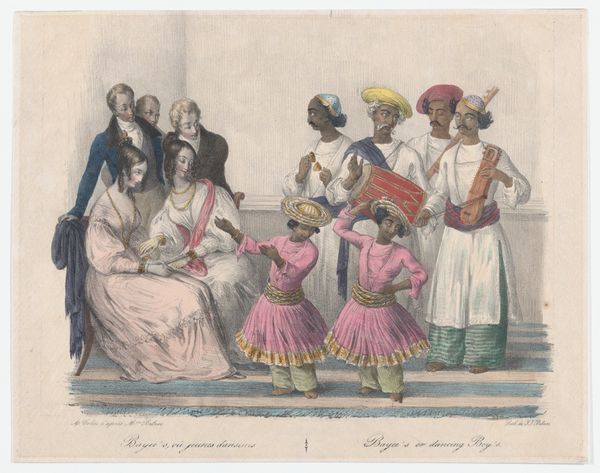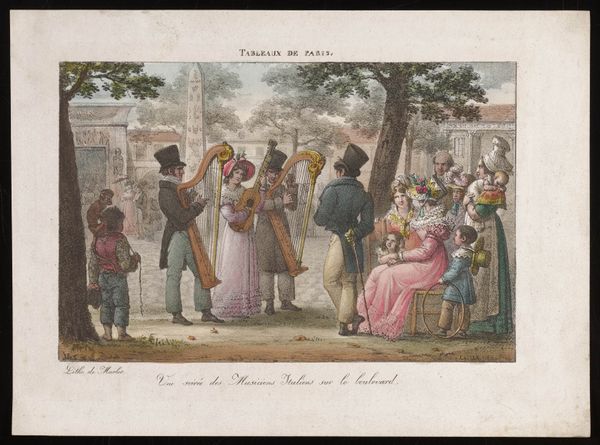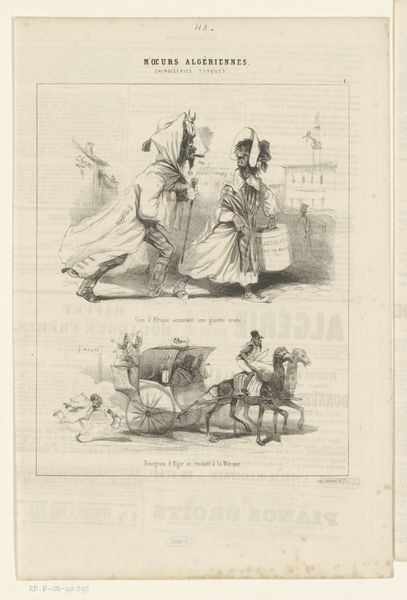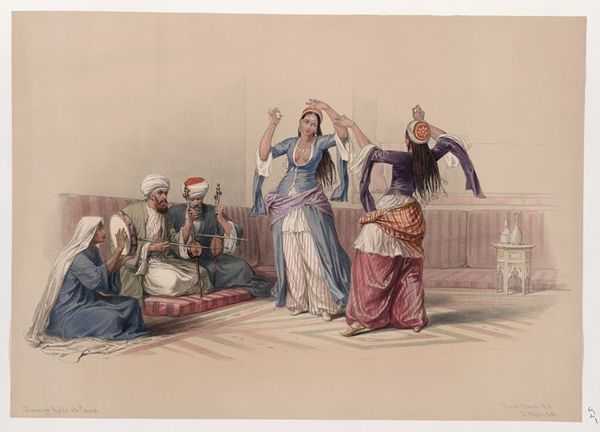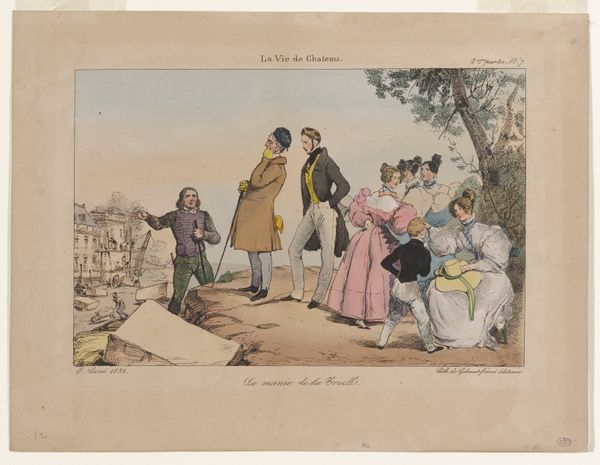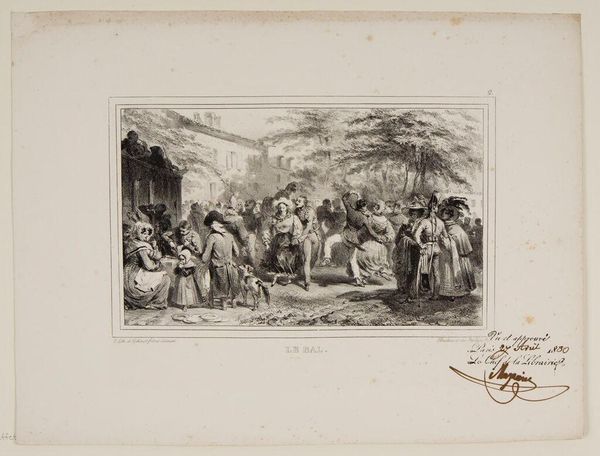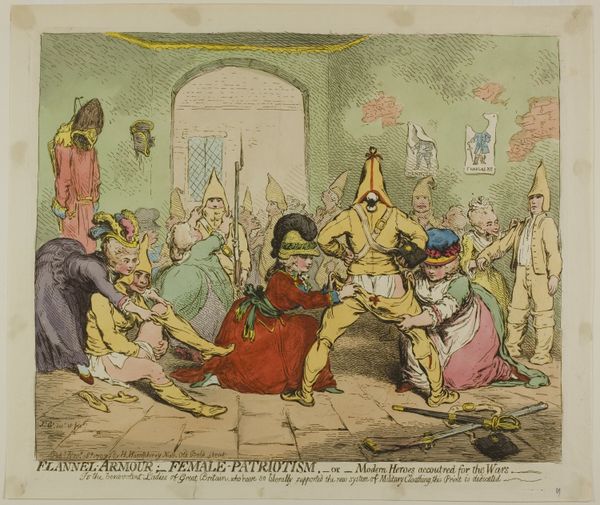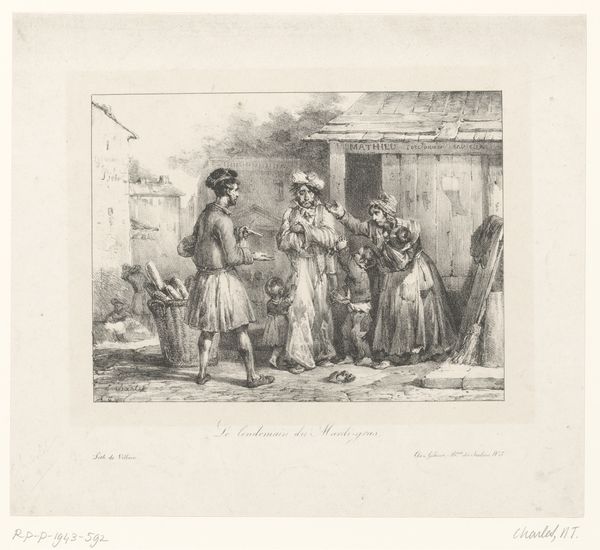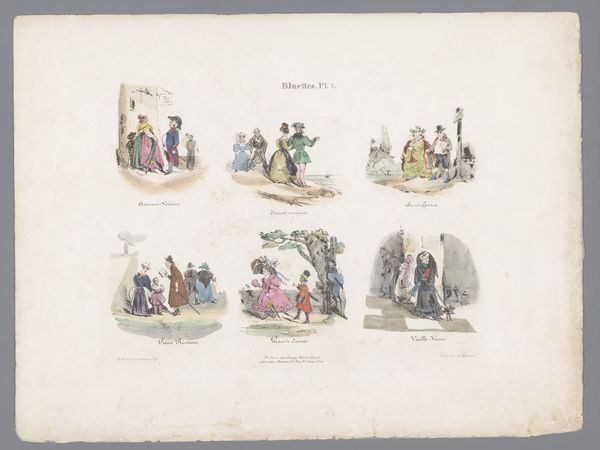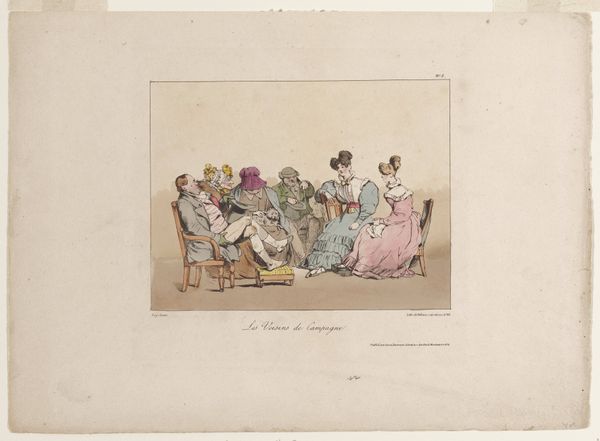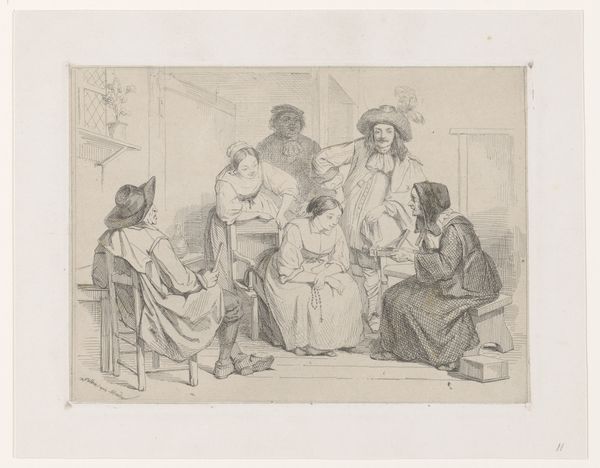
Une Nautch, from "Twenty four Plates Illustrative of Hindoo and European Manners in Bengal" 1832
0:00
0:00
drawing, lithograph, print, etching
#
portrait
#
drawing
#
lithograph
# print
#
etching
#
asian-art
#
orientalism
#
genre-painting
#
musical-instrument
#
watercolor
Dimensions: Sheet: 9 15/16 × 13 7/8 in. (25.3 × 35.3 cm)
Copyright: Public Domain
Editor: This is "Une Nautch, from 'Twenty four Plates Illustrative of Hindoo and European Manners in Bengal'," a lithograph and etching by Alexandre-Marie Colin, dating to 1832. It's got a sort of staged feeling to it; everyone seems to be posing. How should we interpret what's happening here? Curator: It's crucial to view this piece through the lens of Orientalism and colonialism. What appears to be a simple genre scene, depicting a nautch – a dance performance in India – is actually a construction of the Western gaze. The composition subtly emphasizes a power dynamic, wouldn’t you agree? Editor: I see what you mean. The Europeans are standing and observing, while the Indian performers are seated and presented for their entertainment. Curator: Exactly. And consider the artist: a Frenchman, documenting "manners" in Bengal. Whose perspective is centered? The clothing, the postures, even the lighter skin tones given to the European figures – all reinforce a sense of European superiority and the "othering" of Indian culture. How might contemporary feminist theory challenge this representation? Editor: Well, from a feminist perspective, we could also consider the position of the women within the nautch. They're the objects of spectacle, their bodies commodified for the entertainment of these men, both European and Indian. Curator: Precisely! This challenges the monolithic idea of "Indian culture." We start to see layers of gender, class, and power all intertwined and negotiated within this colonial context. The gaze isn’t just European; it’s also male. Editor: So it's more than just a pretty scene; it’s a reflection of complex power dynamics. I guess it makes you wonder about what's been left out. Curator: Indeed. And prompts us to question whose stories are told and whose are silenced within the historical record. Hopefully this new approach has given you food for thought, beyond first appearances.
Comments
No comments
Be the first to comment and join the conversation on the ultimate creative platform.

